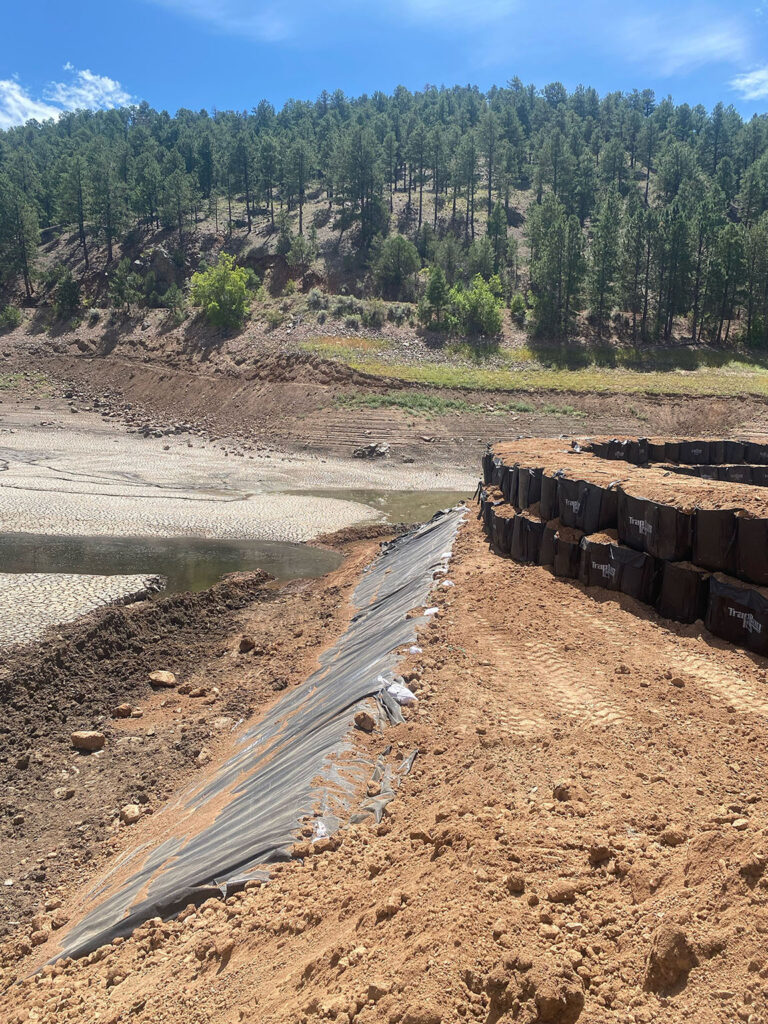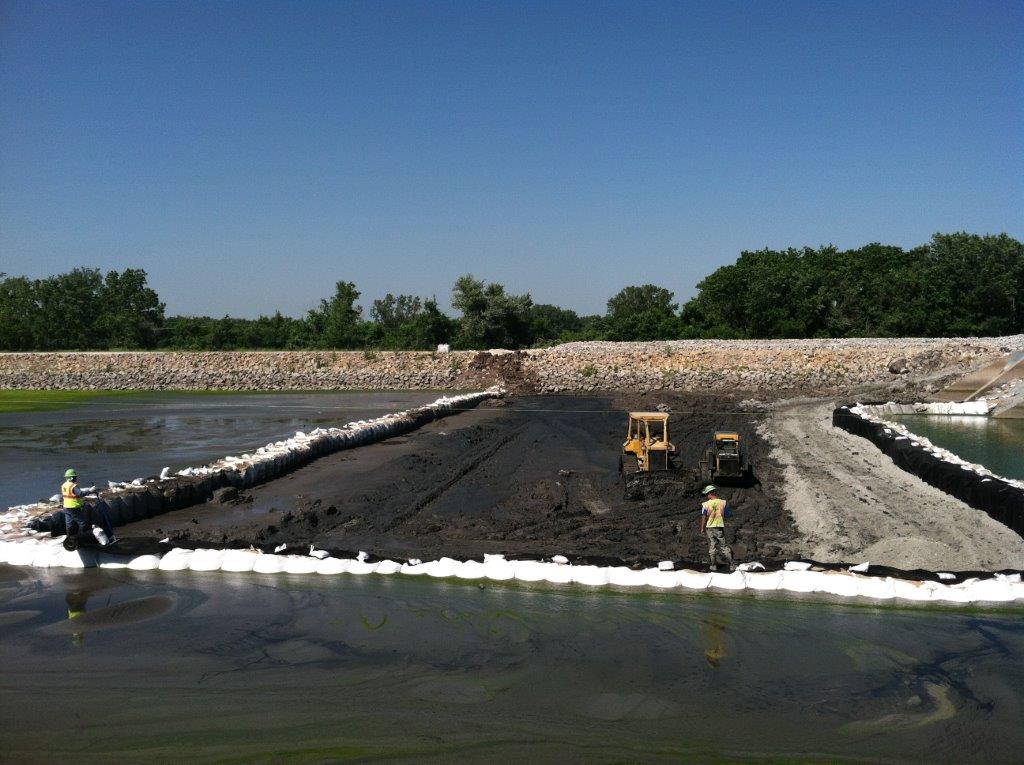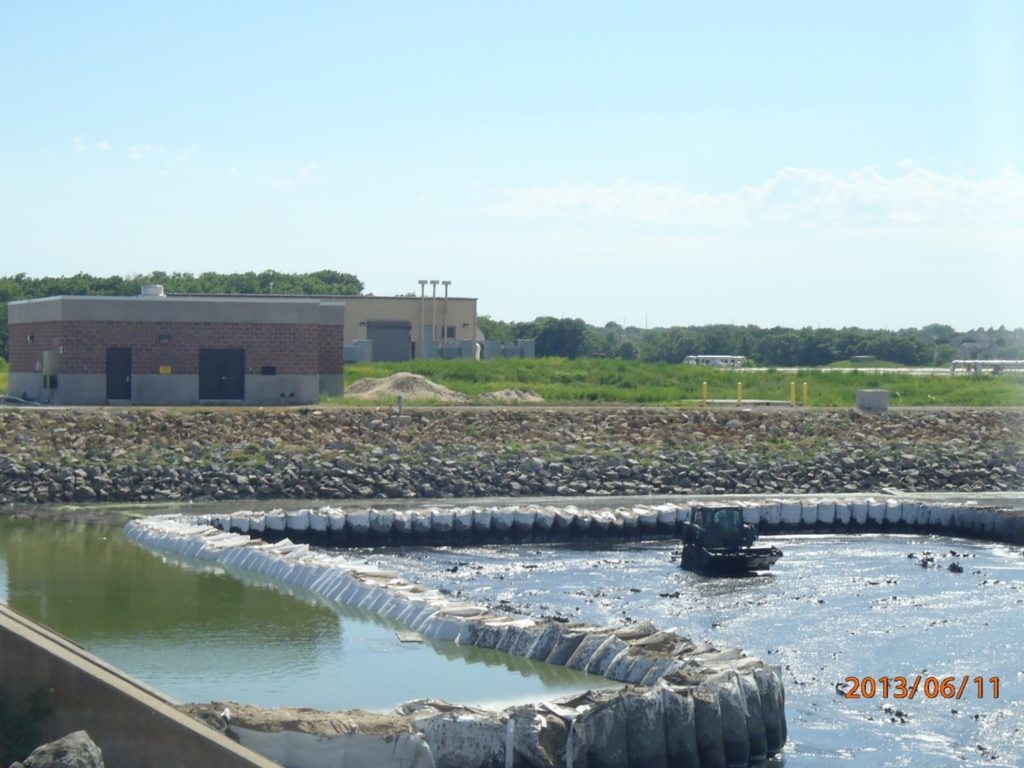Uses for Temporary Cofferdams
Learn about the uses for temporary cofferdams and how to construct a temporary cofferdam system with TrapBag control barrier bags.

If you work in the world of construction, you may have heard of temporary cofferdams before, but do you know just how many uses these impermanent structures have? This article will explore exactly what temporary cofferdams are, how they work, and, most importantly, their many different uses and benefits.
What Is a Temporary Cofferdam?
Temporary cofferdams are structures used to temporarily isolate submerged work areas to allow for the draining of underground construction areas or contain turbidity. After these areas get drained, it’s easier to do the necessary work in dry conditions.
Advantages of Temporary Cofferdams
The main advantage of cofferdam construction is that it creates optimum working conditions, thus improving the quality of work done.
Additionally, when submerged work areas get drained before personnel and equipment move-in, the project’s cost reduces significantly.
When undertaking a project in dry areas, temporary cofferdams can be utilized as a water storage solution. Since these structures are temporary, their construction presents minimal disturbance to the environment. Once a cofferdam outlives its usefulness, all you need to do is remove the water.
How Cofferdams Work
There are different types of cofferdams, and each of them works differently. Cofferdam types are according to their construction material.
When looking to drain a submerged work area, you can choose from earthen, rock fill, double-walled, braced, or cellular cofferdams. Generally, these structures work holding back water from previously submerged areas.
Often, cofferdam construction occurs in or next to a water body. Water is then drained so that work can commence in the previously submerged area. In most construction projects, draining the sites is an ever-present problem, and that’s where cofferdams come in. They hold water away from the worksite, thus allowing construction crews to use their materials and equipment with better precision.
Uses for Temporary Cofferdams
Temporary cofferdams have lots of applications. Here’s how these structures work in different projects:
Construction Sites
When constructing in submerged areas, a cofferdam helps crews dewater the worksite. It holds back the surrounding water so that water gets pumped out of the worksite.
Foundations and Basements
Basement construction often requires a lot of digging, which may intrude onto the water table. If the excavation area gets flooded, building a cofferdam will prevent more water from flooding in, thus allowing you to drain the area.
Bridges and Dams
Cofferdams are commonplace in projects relating to the construction and repair of bridges and dams. They act as a barrier that allows crews to pump out water from the worksite and build piers, bridges, and platforms over or within the water.
Canals
When constructing canals, there’ll be water where you don’t need it. Cofferdams enable crews to keep the work area dry by holding back the water. This also prevents flooding, hence ensuring the safety of personnel and equipment.
Boat Ramps
Boat ramp construction projects typically take place in submerged areas. Therefore, you need an effective water barrier to keep the work area dry and safe.
If you’re constructing or repairing a boat ramp, an inflatable or water-filled cofferdam is an effective solution for construction dewatering before you get down to work.
Shoreline Restoration
Cofferdams can help in preventing shoreline deterioration by acting as a barrier between the water and the beachfront. You can also use them to dewater shorelines and allow for construction and maintenance projects.
Pipelines
Sometimes, laying or repairing pipelines involves working in submerged areas. Installing a cofferdam allows construction site dewatering to create a dry and safe site.
TrapBag Cofferdams
The traditional TrapBag design has helped construction companies build cofferdams for many different projects. But we felt like we could create an even better option.
That’s why we created the new TrapBag cofferdam solution: rectangular, two-cell bags with a rectangular exterior reinforced with Coroplast interior paneling to prevent bulging. They are easier to use for cofferdam projects while still offering the same strength and reliability that you expect from TrapBag. Our cofferdams are available in both 2 and 4 ft sizes and they can be filled with sand or gravel.
Benefits of TrapBag Temporary Cofferdams
TrapBag cofferdam bags are designed for easy lifting, so they can be pre-filled and set into place. The rectangular shape enables each bag to fit snugly against adjacent units to create a strong water barrier.
In addition to being a superior alternative to conventional sandbags, TrapBags are highly efficient and cost-effective. The bags are made of high-strength, lightweight textile. Because of their quality construction, you don’t have to worry about any water seepage that could delay your project further.
Typical cofferdams require a significant amount of time to install, which could affect your project timeline. TrapBag cofferdams can be easily installed in just a few hours.
FAQ’s About Cofferdams
Below are some of the answers to the questions you may be asking about cofferdams.
Can Cofferdams Be Permanent?
Cofferdams are temporary structures. Nevertheless, some types of cofferdams can become permanent structures. For instance, it’s common to come across hydropower dam projects that use cellular cofferdams as permanent structures.
What’s the Difference Between a Cofferdam and a Caisson?
Cofferdams are often confused for caissons. Nevertheless, caissons are the permanent structures built during the initial stages of a construction project, while cofferdams are temporary structures built to enable crews to drain the worksite.
Final Thoughts
Nothing is as difficult as undertaking a construction project in a submerged environment. Undertaking excavation works or even guaranteeing the safety of crews, equipment, and construction materials will be impossible. However, with a TrapBag cofferdam in place, you’ll be able to drain the site and create a safe work environment.
When undertaking a construction project in a submerged or flood-prone site, you need a reliable cofferdam that guarantees the safety of your crews and equipment. Using TrapBags for temporary cofferdams is the go-to solution for all your construction projects. Contact us today as you start your project.[/vc_column_text][/vc_column][/vc_row]


